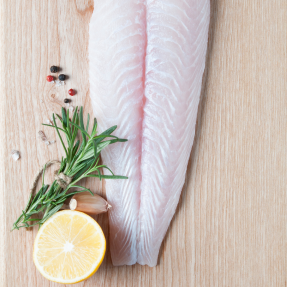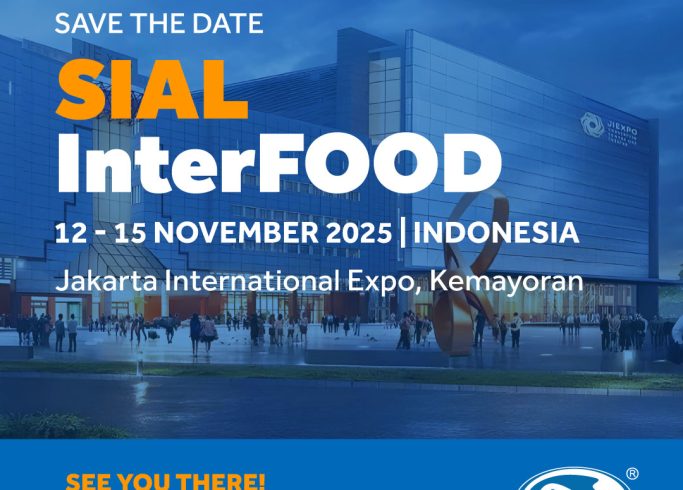[Industry news] The European market trends for white fish
03 April 2017
[Translated from VASEP, find the original article here. We are not in anyway responsible for the content of this post]
There is a growing consumer awareness about sustainability issues relating to fisheries and aquaculture. As a result, sustainability certification is emerging as a market access requirement for frozen white fish. In the short term this applies particularly to high-end and mainstream market segments in North-Western Europe. Over the long term, however, it will also apply to other segments and parts of Europe.
Importance of sustainability certification is increasing
Sustainability certification for white fish species is becoming increasingly important, because consumers are becoming more conscious of sustainability issues relating to fisheries and aquaculture. Sustainability certification is therefore expected to become a market access requirement throughout Northern and Western Europe. Marine Stewardship Council (MSC) and Friend of the Sea are the most important certification schemes for captured white fish. For cultured white fish, the Aquaculture Stewardship Council (ASC) and Global Good Agricultural Practice (GLOBALG.A.P) certification have a leading position.
In order to maintain their market position in the seafood category, GLOBALG.A.P. and Friend of the Sea have been offering consumer labels for cultured fish products since December 2014. It is available under the name ‘Friend of the Sea Add-On Module for Aquaculture’, and it has been added to the GLOBALG.A.P. Integrated Farm Assurance Aquaculture Standard.
The mainstream markets for white fish are increasingly demanding certified white fish products, particularly supermarkets in North-Western Europe. In Europe, the availability of ASC-certified white fish products (primarily pangasius and tilapia) in 2016 shows that the Netherlands, Switzerland and Germany are the largest markets for ASC-certified white fish.
The number of approved products in the main ASC-certified seafood markets in Europe is as follows:
- The Netherlands (356 approved products)
- Switzerland (270)
- Germany (239)
- Scandinavia (131) with Sweden (63) and Denmark (54) leading
- France (44)
- Spain and Italy (21 and 20)
- Poland (7), Czech Republic (6), Slovakia and Romania (both 4).
Quality labels are becoming more important
Product and processing quality has continued to gain importance throughout the entire seafood sector. European importers increasingly expect their suppliers to comply with quality standards such as British Retail Consortium (BRC) and International Featured Standards (IFS). Although previously quality standards were of importance only in the retail segment, they are set to become an additional buyer requirement in all market segments in the long term.
If you are unable to meet European quality standards, it will drastically limit your market potential in a growing number of countries (also outside the European Union) and market segments.
Convenience food remains hot
The demand for ready-to-eat and easy-to-cook, value-added white fish products is increasing. Examples of such products are microwave products and fish snacks. The pressures of time and consumers’ unfamiliarity with preparing fish are the main cause of this trend. Consumers interested in such convenience products prefer meals that are quick to prepare but also healthy. Examples of white fish species that are often used in convenience food products are:
- Pollock
- Alaska pollock
- Pangasius.
Greater acceptance of new species
Consumers in Europe are showing a growing preference for new and exotic white fish species. In the first place, consumers have better access to tropical fish products. In the second place, the demand for high quality fish products has been growing. Both developments have resulted in the acceptance of fish species that were relatively unknown before.
One recent example are the efforts to introduce cobia as a new tropical delicacy for the European market. Previously, species that have successfully penetrated mainstream markets in Europe are pangasius and tilapia.
In 2015, Pangasius had a share of 9% in European imports, behind cod and Alaska Pollock (both one third of the market), and hake (14%). Tilapia takes only 2% in total European imports. More information on European imports by species is in Figure 1 below.
![[Industry news] The European market trends for white fish 1 Import segment by species (2015, Europe)](https://www.vinhhoan.com/wp-content/uploads/2017/04/Screen-Shot-04-03-17-at-09.33-AM.png)
Source: Globally Cool, based on ITC Trademap (extraction August 2016)
This trend is expected to continue in the years to come and provides opportunities to anyone considering entry to the European market with new fish species.
Innovation continues in packaging and preparation
Skin-packaging (fish on a plate that is sealed with plastic wrapping) is cited as an up-and-coming way of packing fish products, because it improves the presentation. Another example of the development of innovative preparation techniques are steaming bags that can be easily used in microwaves and ovens. These steaming bags can be increasingly found in the European retail market. This trend is also linked to the trend for convenience food.
Client-specific production is in demand
Product requirements vary widely throughout Europe. It is therefore important for you to produce white fish products that comply precisely with customer requirements. This can be achieved by working in close alliance with your European buyers.
In this scenario you should be capable of exerting influence on all parts of the production process, ranging from farming or fishing to processing. Moreover, you need to be flexible in terms of your product range. Client specific production includes aspects such as farming on demand, packaging and portioning.
Increasing demand for responsible sourcing
European buyers will increasingly demand that exporters have sustainable and socially responsible ties with their suppliers. To comply with sustainability standards, as a supplier to the European market you have the following options:
- Prove that you have complete control over the production process;
- Show the willingness to invest in production facilities, or;
- Support your suppliers with making the necessary investments.
Investments that may be necessary can relate to the farm infrastructure or the fishing equipment that is required for compliance with sustainability standards.
Increasing emphasis on fish production in the European Union
The European Commission (EC) is emphasizing that the European Union should become less dependent on the import of fish from outside Europe. This must also be seen in the context of growing competition for fish (proteins) in previous periods from strong growing markets such as Brazil, Russia, India and China.
To achieve this, the European Commission and national governments are investing in increasing production through technological innovation and business support. These efforts are not likely to increase production significantly in the short term. However, these efforts may be successful over the long term and may reduce the demand for certain species from outside Europe. Such as pangasius and tilapia in particular.
Examples of white fish species produced in Europe that might pose a competitive (including price) threat to imported species in the future are sea bass and sea bream. For more information, see our study about competition on the European frozen white fish market.
Lower European import of Vietnamese pangasius
Europe is one of the largest markets for the Vietnamese export of pangasius. But demand has been under pressure recently. This is illustrated by the declining import of pangasius in Europe in 2015 (-14% compared to 2014). The pangasius sector in Vietnam faces several challenges, such as overcoming the added water scandal, high temperatures resulting in more diseases, and an anti-dumping policy in the United States.
In the beginning of 2016, the global consumption of pangasius started to recover. However, the Vietnamese pangasius industry is still struggling due to high competition from other white fish species such as cod and Alaska pollack.
As long as the European economy shows growth, like in previous years, it can be expected that pangasius consumption will remain under pressure and not recover from previous declines in demand. As pangasius is considered as a relatively cheap fish, its consumption comes under pressure when people get more money to spend. The trend of more certified white fish, including pangasius, in the European market could however support the consumption of Pangasius.
Weakening reputation of tilapia fish aquaculture
Europe is a relatively weak market for tilapia. In Germany, hardly anyone eats tilapia and the rest of Europe is following. Recently in 2016, the tilapia fish aquaculture received negative attention due to the deadly Tilapia Lake Virus (TiLV). TiLV has caused great damage to tilapia fish stocks in Ecuador and Israel since 2009.
Another issue in Europe is caused by the findings of recent studies about tilapia farming. It appears that eating farmed tilapia may cause serious health damages such as asthma, inflammation, cancerous problems and more. Still, worldwide Tilapia aquaculture production is expected to grow in the next years because this fish is increasingly popular in Developing Countries.
Stricter control on mislabelling fishery products
Mislabelling on fishery products is a problem in Europe. According to various studies, the level of mislabelling fish products on the European market is relatively high. A control plan was therefore established by the European Commission to assess and minimise mislabelling on white fish products with regard to its declared species in 2015.
Stricter control is necessary to improve consumer confidence and to strengthen the European market. As the control plan is still ongoing, no new changes in labelling is found. However, a traceability system and a European-wide labelling system might be introduced as these solutions could prevent mislabelling.











